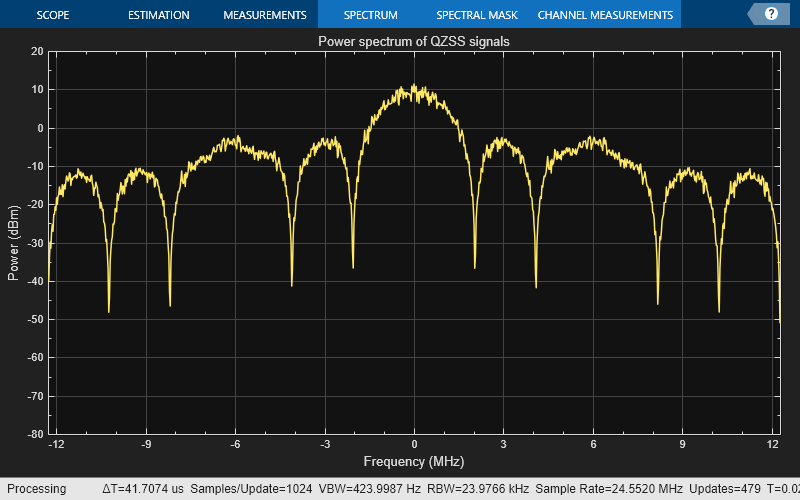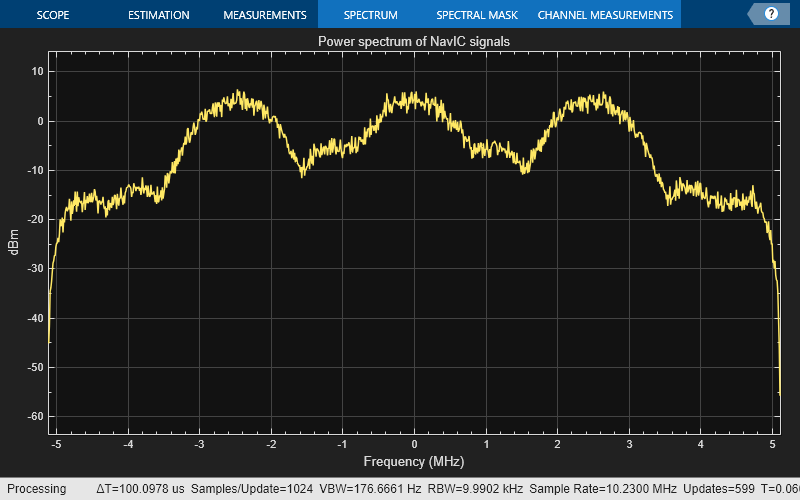casmmod
Syntax
Description
[
performs coherent adaptive sub-carrier modulation (CASM) on the input signal to return a
multiplexed modulated signal, modsignal,efficiency] = casmmod(signal,pin,pquad)modsignal, and the power efficiency of
the multiplexing process, efficiency. pin is the
power for the in-phase (I) component of the multiplexed signal, and
pquad is the power for the quadrature (Q) component of the
multiplexed signal.
CASM is a constant envelope modulation (CEM) scheme to combine multiple global navigation satellite system (GNSS) signals.
For more information on the equations used to derive baseband CASM signal, see Algorithms.
Examples
Input Arguments
Output Arguments
Algorithms
The general CASM equation is given by this formula.
Here:
Io is the in-phase signal component and is calculated by:
ωc is the carrier frequency.
ϕs(t) is the phase of the multiplexed signal s(t) and is calculated by:
Qo is the quadrature-phase signal component and is calculated by:
where:
PI is the in-phase signal component power and PQ is the quadrature-phase signal component power.
si is the square wave of unit amplitude, denoting the subcarrier signal. i is an integer in the range [1, N], where N represents the total number of signals to be multiplexed.
θn is the modulation index of the nth signal component.
Considering the first equation, this is the equivalent baseband CASM signal equation.
References
[1] Dafesh, P. A., T. M. Nguyen, and S. Lazar. “Coherent Adaptive Subcarrier Modulation (CASM) for GPS Modernization,” 649–60, 1999.
Extended Capabilities
Version History
Introduced in R2024b

